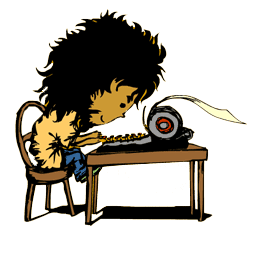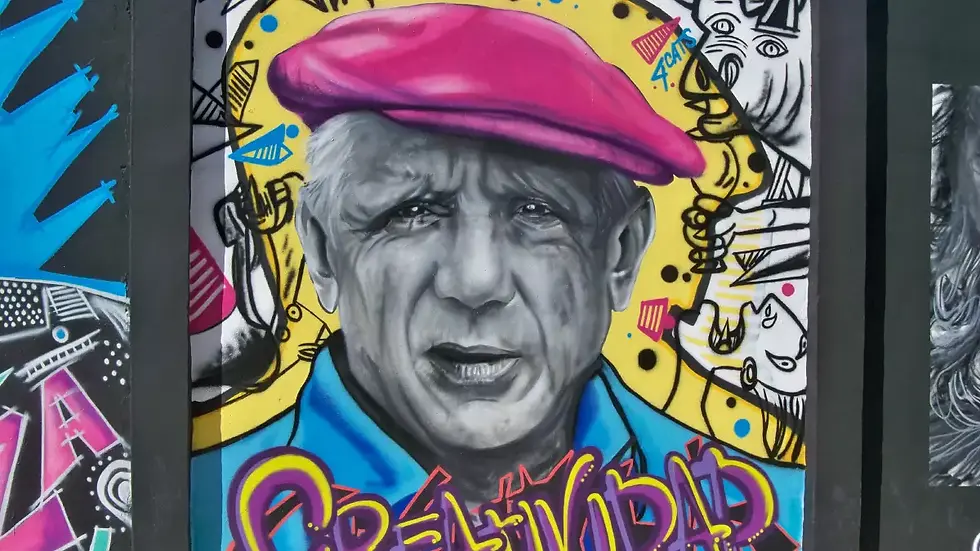Tourist at Home
- Shehan
- Jun 18, 2022
- 1 min read
Updated: Aug 30, 2022
Conde Nast Traveller (c) 2014.
Unofficial tours of the island’s capital.

I’ve lived in Colombo on and off for over 30 years and never felt the need to take a tour of it. That changed the day Bollywood disappeared.
I had a stock answer when asked of my favourite place in Colombo. Not Galle Face Green, Mount Lavinia Beach or Independence Square. But a dinghy DVD shop in Colpetty, run by a Pakistani and called Bollywood.
For years, it served as my solace, my education and my weekly outing. While there are DVD sellers in most Colombo malls, none can touch Bollywood. Where others offered box sets and box office hits, Bollywood served up the life works of Hitchcock, Fellini, Kurosawa, Bergman, Kubrickand a hundred other cinema legends for less than 200 bucks ($1.50) a pop. It was a treasure trove stuffed into a shanty.
For many years, my tours of Colombo were limited to the Maradana second hand book stalls, the local swimming pool, a few dodgy bars, and a DVD store the size of alarge elevator. I saved the explorer in me for the rest of the island, and ignored the capital, as most tourists tend to. The city of my childhood had been plagued with curfews, riots and bombs. I had little interest or affection for it.
And then one day, Bollywood vanished.
The statues of assassinated leaders around Colombo remind us that those who live by the sword may perish by it. Illegal downloads were killing pirated DVDs and my favourite Colombo hangout was its latest casualty. The rambutan seller next door reckoned it had moved to Pettah, somewhere amid the sweaty side streets, the crumbling buildings and the heaving bazaars.
I made repeated visits, but couldn’t find it. And then I thought of other things that had vanished from Colombo. Not all of them as fondly remembered. The beggars, the strays and the rubbish dumps that marked us as another unkempt Asian capital evaporated a few months before we hosted the Commonwealth. After the war, the checkpoints were dismantled and the walls taken down. Buildings rose and slums were cleared. Roads were carpeted, streets lit up and the city began reclaiming its soul.
Take Pettah, for instance. A sprawl of pavement vendors peddling bargains from the harbour and the used at half price. A carnival of chaos, where antiques lurk amongst kitsch and colour competes with noise. Today what used to be the turf of traders and gangsters has lost ground to the developers and the hipsters.
The Floating Market opened recently on a canal connecting Pettah to the lake. A wooden walk way of shops and restaurants, it’s part of the new Colombo brought to you by the Urban Development Board, run by the Ministry of Defence. The money and muscle that won the waris now diverted into making the city prettier and easier to package. And it seems to be working.
The Floating Market follows spaces like the Race course and the Dutch Hospital, colonial buildings that have been renovated into shops, restaurants, cafes and hangouts. Parks like Vihara Maha Devi or the ones surrounding Independence Square, once avoided at night, are now flood lit, landscaped and paved.
The Pettah Interchange shows the city reclaiming its past and reinventing its present. It is a an annual event as vibrant as the elephants and fire dancing at February’s Perahera, as noisy as the televised night races along the city centre and as colourful as the city’s Art Biennale.
Abandoned market places and terraces become venues for electronic dance parties, which attract DJs from Europe and talents from an impressive local scene. City spaces are transformed by beats and strobes into gathering places for the young ravers.
Local hip-hop rules the airwaves, rockers of every snarl play to packed bars and graduates of the Music Matters school fuse the avant-garde with the indigenous. But it’s not just the sounds that have exploded over the last decade.
Political satires, bawdy comedies, immersive drama experiments and tightly penned social critiques play at Colombo’s theatre to eager crowds. While local cinema and literature begins to find its voice, the local theatre scene is assured and provocative, and shares with you the city’s troubled thoughts.
It is quite possible that the capital is developing a culture of its own. This I think this as I plod from Fort past the Cargills building into the breeze of Galle Face Green before resting in the shade of the Dutch Hospital. It is the kind of walk that 4pm was invented for. Watching the honey light play with the trees and tops of buildings, I slowly grow ashamed for choosing a DVD shop as my favourite city attraction.
And that’s when I spy the red double decker.
Yamu.lk, a lovingly compiled online guide to the city, extols the virtues of acting like a tourist in Colombo. The impressive site, filled with gems uncovered on curious excursions, is essential reading for visitors and residents. I take their advice and sign up for an open-top tour that crawls at push bike pace around Cinnamon Garden’s preserved buildings, the correct speed by which to view them.
I study writer Juliet Coombe’s wonderful selection of Colombo city walks, track down a company called Trekurious who runs a dodgy bar tours around town. I chat to friends and find that those who didn’t grow up here, appreciate the city more than I do. And that each has their own version of the Colombo city tour.
Conquering this city isn’t easy. Arab and Roman traders tried with gifts, Europeans attempted with guns and crosses, and capitalists from east and west have managed to do so with cheque books. Each ruler, coloniser and liberator left their mark of the city’s soul, and over the centuries, Colombo has grown steadily and haphazardly.
Dripping with history, not all of it pretty, and ambling towards an uncertain future, somewhere between a messy Singapore and a neat India, Colombo is a place you need to make up your own tours to see. Here are a few.
The Tick Box Tour is for those who buy greatest hits albums. It can be completed in a day or savoured in two. A sunset at Galle Face Green, sipping tea by the sea, watching children attached to kites. A lunch at Barefoot Café amid books and bohemians. A walk along the ampitheatre at Independent Square, where the rich and the pear-shaped come to shed pounds and share gossip. And a meal at Tintagel, a former leader’s mansion, now a hotel fit for a king, or at least for a prince named Charles.
If traffic is low and energy is high, you may be able to climb Buck Lighthouse, chill at Mount Beach, buy something bright at House of Fashion and toast to the horizon from the Kingsbury Sky Bar.
But as any Pink Floyd fan knows, greatest hits tell you none of the real story. If you’d like to hear Colombo’s best moments performed live, here are a few more tours you could try.
The Building Tour or the Geoffrey Bawa show. Lanka’s celebrated architect designed the parliament on the lake, the Gallery café couched in trees, and the temple on Beira Lake, floating amid pelicans and swan boats.
Take a tuk from Fort to Cinnamon gardens via Slave Island and you’ll see the preserved past in the Cargills building, the City Museum and the Grand Orient hotel, the opulent bluster of Nelum Pokuna and BMICH, two of many gifts from the Chinese, and a town hall that looks like the White House opposite the mosque that looks like the Kremlin.
The Religious Tour takes you to Gangaramaya Temple with its carvings and long-suffering pet elephant, the sandstone Grand Mosque in Pettah, the colourful Kathiresen Kovil around its corner, and the 18th century Wolfendaal church and its ebony pulpits. Despite recent agitations, Colombo’s four main religions and its followers continue to co-exist in harmony.
You could take a Sports Tour of the only city with four test match venues. Drop in around March for the drunken madness of a school big match, join a street cricket game on any day with a y in it or sit at the cricket café and wince at the puns on the menu.
Take the Tragedy Tour of the city’s violent streets, dating back to the sieges by the Dutch and the Portuguese and the air raids of the Japanese, and the too many bomb sites, once marked with street art, now just recalled with shame. Or try the Cemetery Tour of Borella Kanatte where pop stars from the 60s, soldiers from the 17th century and Sir Arthur C. Clarke lie amongst elaborate grave stones and ornate trees.
If that’s all too morbid, the Lake Tour will reconnect you with tranquil waters via a swan boat on the Beira Lake, a drive on the banks of the Diyawanna Oya, a chat with river birds at the Waters Edge.
The Street Tour offers the best delicacies. Deep fried prawns on a savoury isso vade at Galle face, a kottu roti from the infamous Pillawoos and the organic produce at the weekly Good Market. Knock back a king coconut or a Portello from the roadside and sip a plain tea or arrack at a local dive.
A Historic Tour could connect the National Museum with the last king of Sri Lanka’s jail cell now bizarrely located in a parking lot. A Chill out Tour could begin in a spa in Colpetty and end on the sand in Mount Lavinia.
Not everyone has a passionate affair with the city they live in. For most a city is a parent or a sibling. Not quite flesh of your flesh. More a relationship you didn’t choose but are stuck with. You know that you tire of the city every few years and plot your escape, sometimes successfully. That every holiday you get, (and Lankans enjoy a whopping 25 days off per year) you abandon it for a prettier slice of the island.
Maybe your relationship to the city is a marriage arranged at birth, and like all marriages should be judged not by longevity, but by moments shared and memories cherished.
I never did find Bollywood, though it matters little. I’m watching less movies these days. How to sit home when there are things to explore? I have an Art Tour, a Nightclub Tour, and a Museum Tour to attend. And a few hundred other tours that I’m yet to make up.











Comments